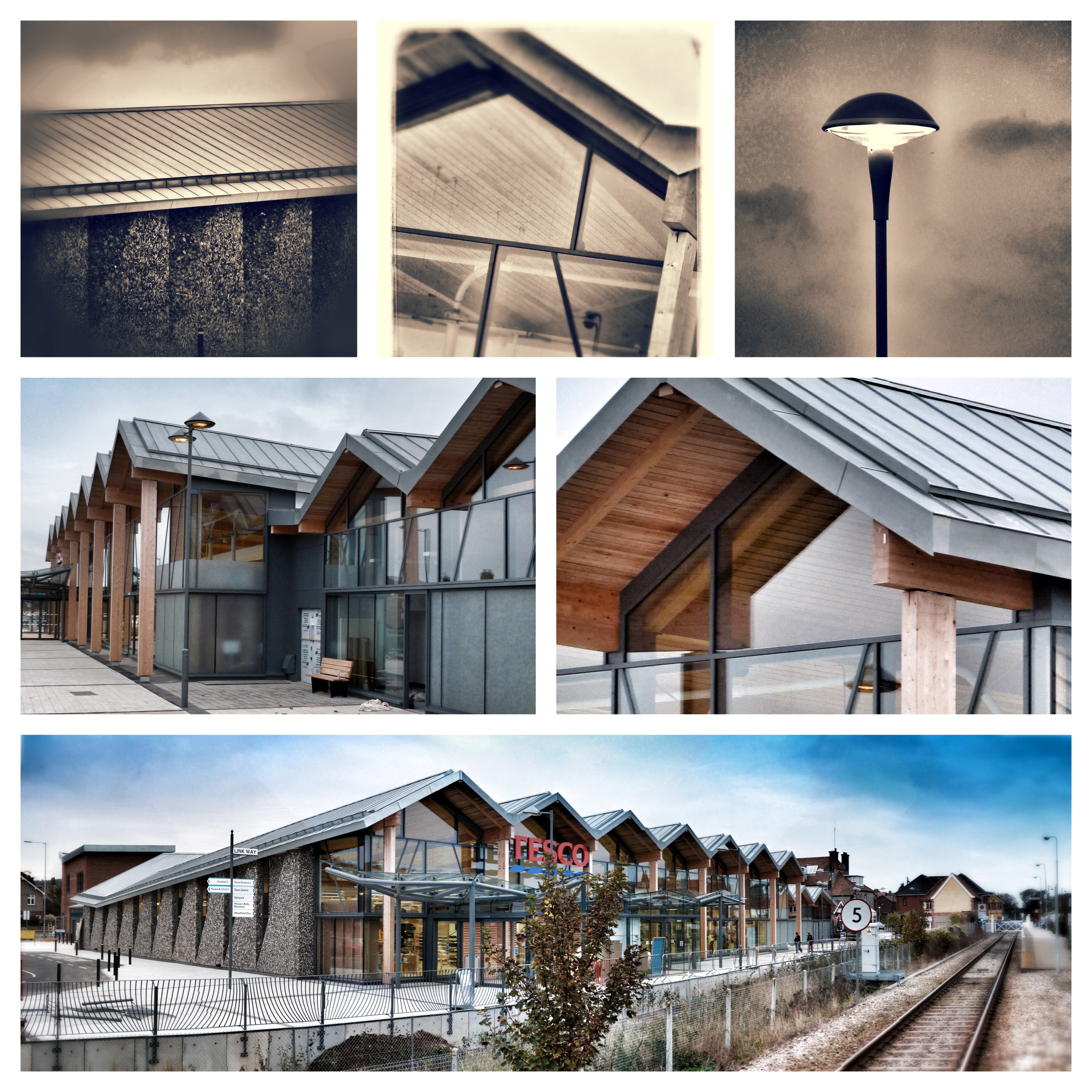Whether they are factories, large retail units, or new agricultural barns, there is a broad range of non-residential buildings which help shape our built environment. Whilst all of these make a definite contribution to the economic prosperity of our District, they all present their own design challenges.
Buildings such as supermarkets, DIY stores and garden centres have no traditional counterparts. With their deep plan forms, they can be difficult buildings to assimilate into their surroundings. Whilst all attempts should be made to try and respect the scale and proportions of adjacent buildings, in practice these 'big box' buildings do have the tendency to transcend rather than complement their setting.
The opportunity should be taken to provide for active frontages overlooking public spaces and routes. They should be screened by smaller buildings that wrap around the building, or by the use of substantial landscaping, areas of public realm and interesting materials such as green walls and decorative architectural detailing.
Activity generating functions within a building, such as entrances, reception areas, cafeterias and offices, should be located so that they can enliven the principal elevation, overlooking the street and the approach to the building. This can provide windows and natural surveillance to the street and communal areas of a development, and bring interest and variety to the building frontage. If possible cafeterias/restaurants/cafes should spill out onto the frontage providing interaction and vibrancy to the street. In other non urban areas, it is still important to ensure that active frontages are provided overlooking public spaces and routes, but a variety of approaches to dealing with this design issue can be used, depending upon the site's sensitivity. For more details see the following page.
The siting of large buildings and industrial units should reflect the context and topography of the surroundings. It may be appropriate to produce scale models or axonometric sketches of any development proposals to demonstrate the impact of any buildings in the landscape and townscape taking account of any constraints e.g. flood risk. New industrial warehouse and retail buildings are often large structures with limited active frontages. Integrating landscape screening along with setting back any building to improve its relationship with the street should be considered.

The examples above illustrate how larger commercial units can be broken up to avoid monolithic forms of development.

Sheringham Tesco - unique design solution which pays regard to its railway setting
Key Considerations
- To ensure that the appearance and potential impact of new buildings from various viewpoints is mitigated, avoid the siting of 'big box' buildings on the top of hills or within sensitive view corridors.
-
Take advantage of existing topography to be less visually intrusive (for example placing the building on lower slopes relative to where it will be mainly viewed from).
-
Think about the use of windows to both add interest to the elevation but also add natural light to the inside of the building.
-
Think carefully about the materials that will be used for the walls and roofs, and potentially use innovative approaches such as the use of green roofs and digging the building more into the land.
-
Parking and servicing should not dominate the primary frontage of the plot. Parking and servicing should be accommodated at the rear or along the side of the building, and these areas should be landscaped.
-
Canteens, offices, entrances, foyers, glass façades and advertising features should be located along the street to create active frontages.
-
Siting smaller units in front of larger ones will reduce the impact of any larger building.